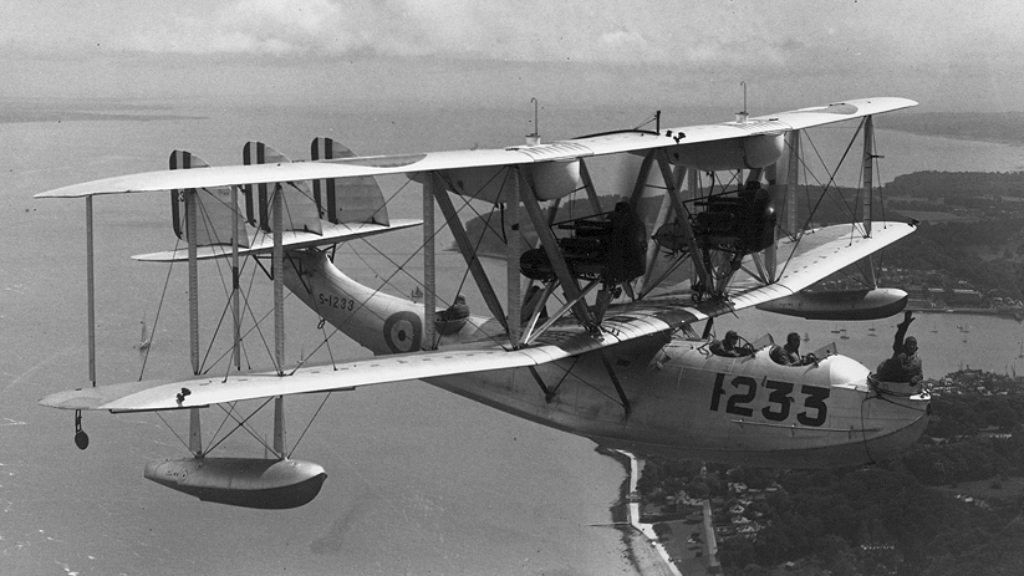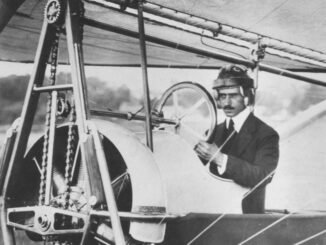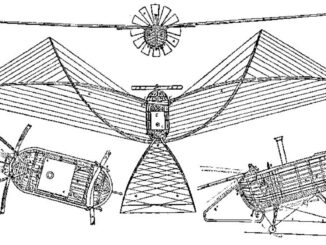 On 10th March 1925, the British military reconnaissance flying boat Supermarine Southampton performed its first flight.
On 10th March 1925, the British military reconnaissance flying boat Supermarine Southampton performed its first flight.
In the mid-1920s, the British authorities were hopelessly looking for new flying boats for military service. At that time, Felixstowe F.5 was the standard aircraft of that type with the Royal Air Force. It was introduced in 1917 and based on older, pre-war design, Curtiss H-12 flying boat from 1913. Regrettably for the Air Ministry, none of contemporary developments seemed to be significantly more advanced than the existing F.5.
Then, Reginald Joseph Mitchell, an aeroplane designer working for the Supermarine company, came up for a stage with his two experimental all-wooden amphibian aircraft – Scylla and Swan. The latter made its first flight on 25th March 1924 and then was presented to the Air Ministry authorities at RAF Felixstowe station. The officials were so impressed by performance of the aircraft that order for six Mitchell´s flying boats was placed immediately.
The first batch of six aircraft, officially designated Supermarine Southampton, was built in accordance with purposedly issued Specification R.18/24. On 10th March 1925, the Southampton aircraft made its first flight, flown by Henry Charles Biard.
An interesting fact is that, contrary to usual development schedule, the maiden flight was performed not by a prototype of the aircraft but the first production example. As mentioned above, the order for Southampton was placed just on the basis of the experimental Swan flying boat and all modifications and changes were implemented directly on drawing board.
Nevertheless, that incredibly unusual confidence in Mitchell´s design made it finally worthwhile. The Southampton met all the RAF expectations and, after completing the first series of six aircraft, more orders from the Air Ministry followed immediately to such extent the Supermarine company had to acquire new production facilities.

The Southampton was a biplane flying boat, powered by two Napier Lion engines. The first examples had both their hull and wings made of wood but, as the production continued, more and more elements were replaced with their metal equivalents. In 1929, the Southampton even received the all-metal hull and later a few examples of the aircraft were also equipped with metal wings.
The Supermarine Southampton began its operational service with the RAF in August of 1925. In a short time, the aircraft proved all its qualities – sometimes being even considered the best flying boat of the era.
Between 1927 and 1928, four Southamptons of the Far East Flight successfully performed a 43,500 km long journey from Felixstowe via India to Singapore. Although those aircraft were specially prepared for that flight – being equipped with additional fuel and oil tanks and had all their armament removed – it was a remarkable achievement. What´s more, it was just one of many long-distance flights performed by formations of the RAF Southamptons in the late 1920s.
Until 1934, when the production was finally ceased, eighty-three examples of the aircraft were built. Apart from the RAF, the Southampton flying boats were also acquired by Argentina, Australia, Denmark, Japan and Turkey. At least two examples were later converted for passenger airliners.
Regrettably, no complete aircraft survived until today. The sole remnant of the Southampton-era is a restored wooden fuselage of N9899 aircraft, currently being exhibited at RAF Museum Hendon.

Cover photo: Supermarine Southampton Mk.II of 201 Squadron, Royal Air Force © IWM H(am) 327. IWM photos used under Non-Commercial licence.



